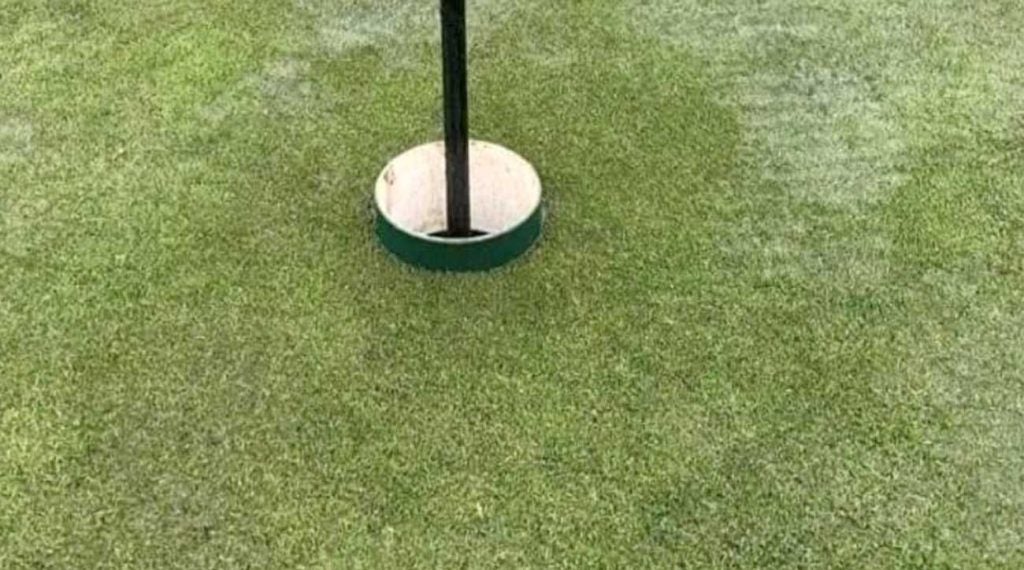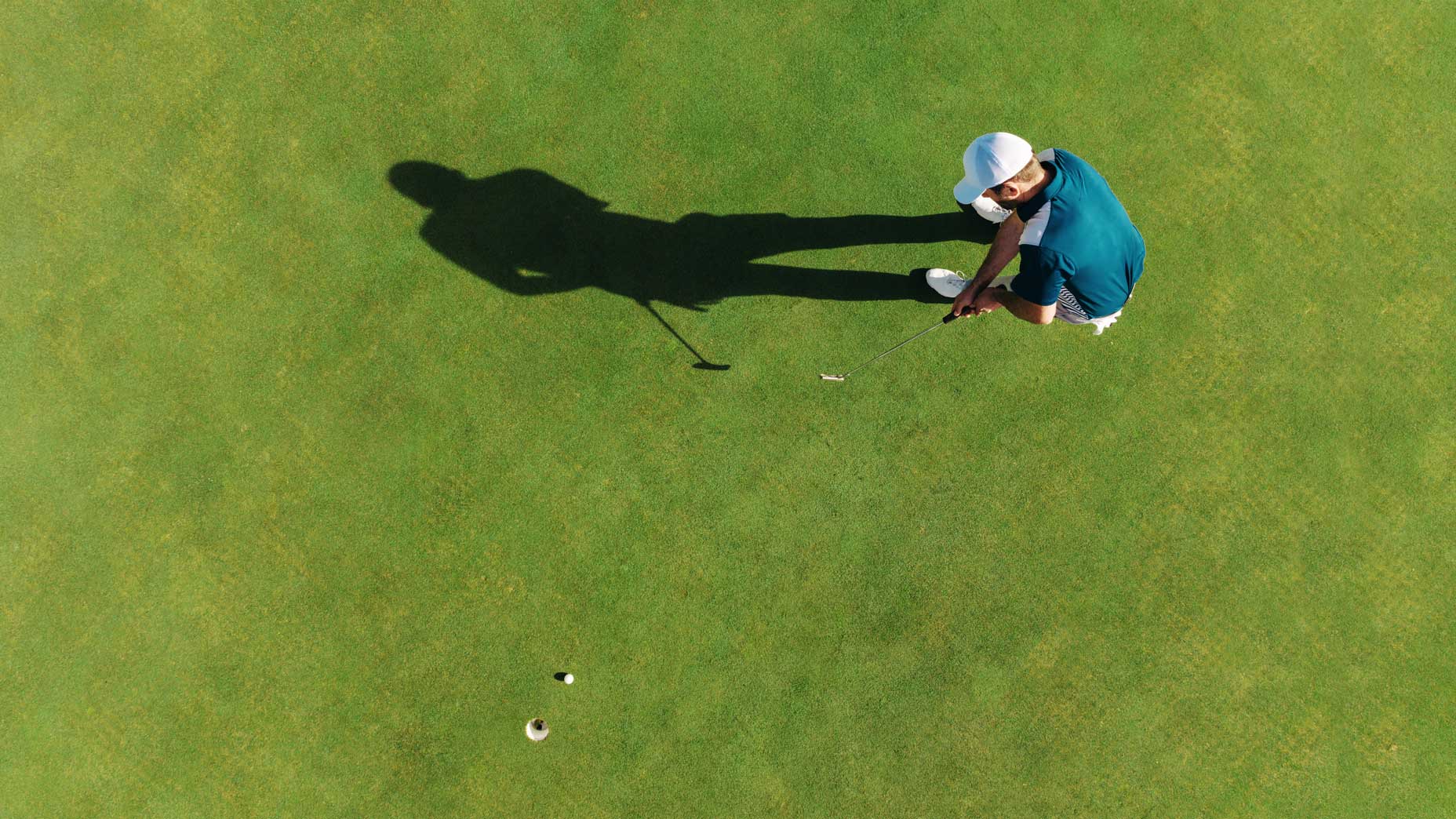 Rules Guy: My ball landed in a water hazard … on an alligator. What now?!
Rules Guy: My ball landed in a water hazard … on an alligator. What now?!
The Etiquetteist: Should a hole-in-one on a raised cup count?
In trying times, we all need distractions. Here’s a theoretical one.
Let’s say you’re playing golf, at a course abiding strictly by the current health and safety recommendations. No rakes, no cart service, no high-fives, and so on. Stepping to the tee of a par-3, while keeping an appropriate distance from your partners — natch — you strike a pin-seeking shot that hits the elevated cup-liner of the hole (a precautionary tweak, made in the name of sanitary conduct).
Question: is it a hole-in-one? To paraphrase a former U.S. President: that depends on what your definition of is is.
In recognition of our new temporary normal, the United States Golf Association has issued a local handicapping rule for raised holes that allows you to post the “most likely score” you would have recorded under ordinary circumstances. If you’re putting, for instance, and you roll a ball that glances off the raised cup, it’s up to you and your partners, discussing the matter in good faith, to determine whether the ball would have dropped into a normal cup.

How fast was it going? Was it headed dead-center at a reasonable pace? Or racing toward lip-out territory on the edge? Those are the sort of factors you have to consider. The same applies for a tee shot on a par-3.
If your shot was a hosel-rocket that rattled the raised cup at the speed of sound and caromed 50 feet away, it’s probably safe to assume that it wouldn’t have fallen gently into the hole. Definitely not an ace. If, on the other hand, your shot was a delicate thing of beauty that landed as softly as a butterfly with sore feet (we’re operating here in an alternate universe where butterflies have feet), you could reasonably conclude that your “most likely score” on the hole would have been a “1.”
Congratulations! Sort of. Because a 1 on the scorecard is not the same as a hole-in-one. An ace is golf’s most celebrated shot, and it’s not an achievement to be taken lightly. It’s certainly not a feat whose validity should be decided by subjective judgment.
ADVERTISEMENT
One of the defining traits of an honest-to-goodness hole-in-one is the objective truth behind it: the ball dropped into the bleepin’ cup. And it happened in the course of a regulation round. There’s a reason a hole-in-one on a par-3 course doesn’t qualify as an official hole-in-one. It’s a great shot, sure, worthy of mention in the grill room. But is it an ace you can brag about someday to your grandkids? Afraid not.
A hole-in-one made against a raised cup is, in the view of the Etiquetteist, not an official ace either. It’s an ace with an asterisk, and is that the kind of ace you want to leave as your legacy? It is not. You want an ace that you can be unabashedly proud of. An ace you can recount to your buddies at the bar without any caveats or qualifications.
So, be patient. Someday in the not-too-distant future, this crisis will pass, golf courses will return to their traditional setups, and in the company of witnesses, the stars will align and you will strike a tee shot that arcs elegantly through the air and lands in the cup. Talk about good reasons to celebrate.
To receive GOLF’s all-new newsletters, subscribe for free here.
ADVERTISEMENT







